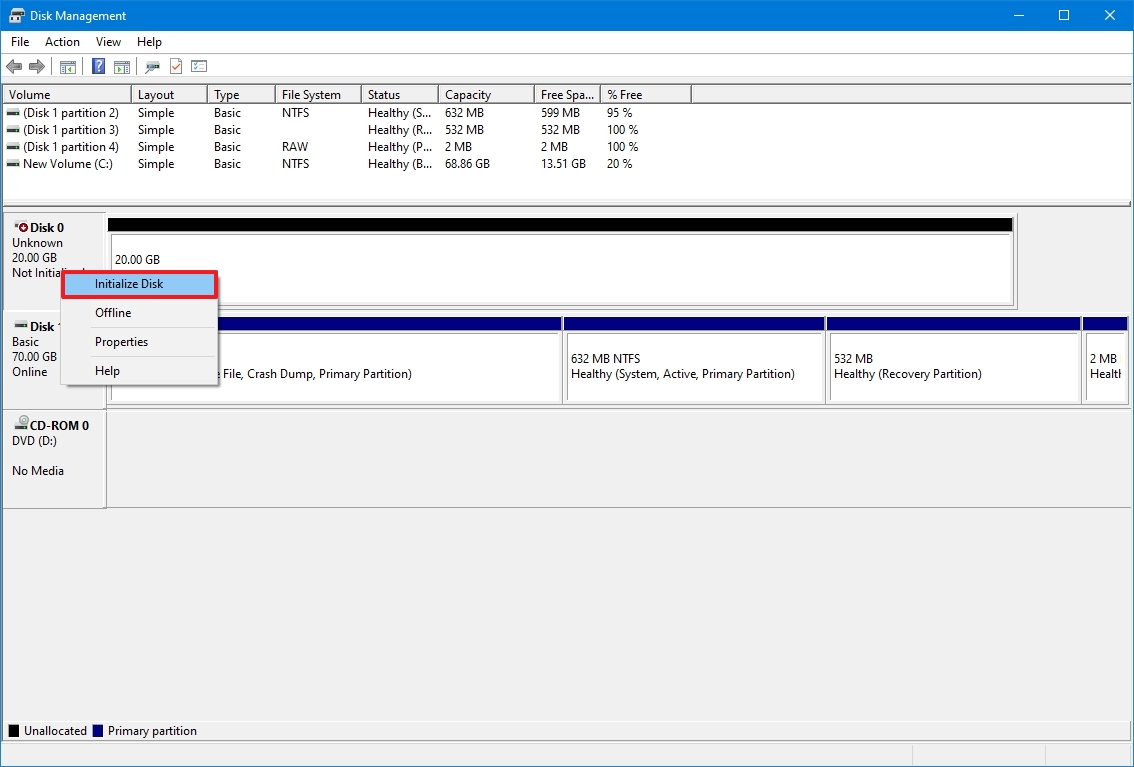How to format a new hard drive on Windows 10
It's essential to format a new hard drive to prepare it for use, and in this guide, we'll show you how to complete this task on Windows 10.

On Windows 10, when connecting a new internal or external hard drive, it's important to spend the time to format it before storing files. You want to do this to ensure the drive is empty, working as expected, and free of malware that might otherwise harm the current setup and files. It's also important to format the storage to ensure it uses the proper settings to avoid compatibility problems.
At any time you format a hard drive, the data will be deleted since part of the process includes purging the file system table that tracks the locations of the files written on disk. The process will redefine where files will be stored, and a compatible file system (such as NTFS, FAT32, or exFAT) will be applied to organize the new content. The system will continue to detect the previous data, but it'll identify that information as available space to store new data.
Windows 10 includes different methods to format a hard drive, but Disk Management is perhaps one of the best options for most users.
This guide will walk you through the steps to properly format a traditional hard drive or Solid-State Drive (SSD), whether it already has a partition or was never initialized.
How to format existing partition from Disk Management
When dealing with a drive with a partition, you can format the existing partition to delete its files and start clean.
To format a partition using Disk Management on Windows 10, use these steps:
- Open Start.
- Search for "Create and format hard disk partitions" and click the top result to open the Disk Management console.
- Right-click the new hard drive and select the Format option.
- In the "Value label" field, confirm a new name for the storage.
- Use the "File system" drop-down menu, and select the NTFS option (recommended for Windows 10).
- Use the "Allocation unit size" drop-down menu, and select the Default option.
- Check the "Perform a quick format" option.
- Quick tip: The quick format option wipes the drive fast but doesn't check for problems. On the other hand, when clearing the option, a full format will be performed, wiping the drive clean and checking for bad sectors. It's an option that could take many hours, depending on the size, but it's a good practice to make sure the drive is in working condition.
- Clear the "Enable file and folder compression" option.
- Click the OK button.
- Click the OK button again.
Once you complete the steps, the tool will format the selected partition on the drive, and you can begin storing files.
All the latest news, reviews, and guides for Windows and Xbox diehards.
How to create and format partition from Disk Management
If you have a hard drive that was never partitioned and formatted, it will not appear in File Explorer, and you'll have to initialize, create a new partition, and then format it before you can use it.
Usually, you can tell a hard drive doesn't have a partition because it will not appear in File Explorer, and it'll show up as unallocated space on Disk Management.
To set up a new hard drive with raw space on Windows 10, use these steps:
- Open Start.
- Search for "Create and format hard disk partitions" and click the top result to open the Disk Management console.
- Right-click the hard drive marked as "Unknown" and "Not Initialized" and select the Initialize Disk option.
- Under the "Select disks" section, check the disk to initialize.
- Select the partition style:
- Master Boot Record (MBR) for hard drives smaller than 2TB in size.
- GUID Partition Table (GPT) for hard drives larger than 2TB in size.
- Click the OK button.
- Right-click the Unallocated space part of the storage, and select the "New Simply Value" option.
- Click the Next button.
- Under the "Simple volume size in MB" section, leave the default size if you plan to use the entire hard drive to store files. Otherwise, specify the amount of space in megabytes you want to allocate for the partition.
- Click the Next button.
- Use the "Assign the following drive letter" drop-down menu to select a new drive letter.
- Click the Next button.
- Use the "File system" drop-down menu, and select the NTFS option (recommended for Windows 10).
- Use the "Allocation unit size" drop-down menu, and select the Default option.
- Type a descriptive name for the storage in the "Value label" field.
- Check the "Perform a quick format" option.
- Quick tip: Clear the quick format option to perform a full format that includes a disk check. If you use the full format option, remember that it can take many hours to complete depending on the size.
- Clear the "Enable file and folder compression" option.
- Click the Next button.
- Click the Finish button.
After you complete the steps, the new hard drive will be initialized, partitioned, and properly formatted.
If the drive is exhibiting problems using the Disk Management tool due to data corruption or another issue, you can use the DiskPart command-line tool to resolve the problem.
More resources
For more helpful articles, coverage, and answers to common questions about Windows 10, visit the following resources:
- Windows 11 on Windows Central — All you need to know
- Windows 10 on Windows Central — All you need to know

Mauro Huculak has been a Windows How-To Expert contributor for WindowsCentral.com for nearly a decade and has over 22 years of combined experience in IT and technical writing. He holds various professional certifications from Microsoft, Cisco, VMware, and CompTIA and has been recognized as a Microsoft MVP for many years.









